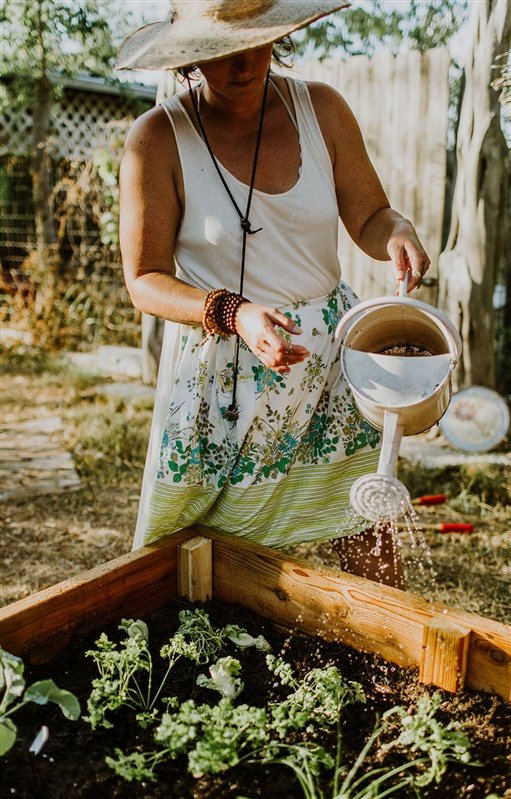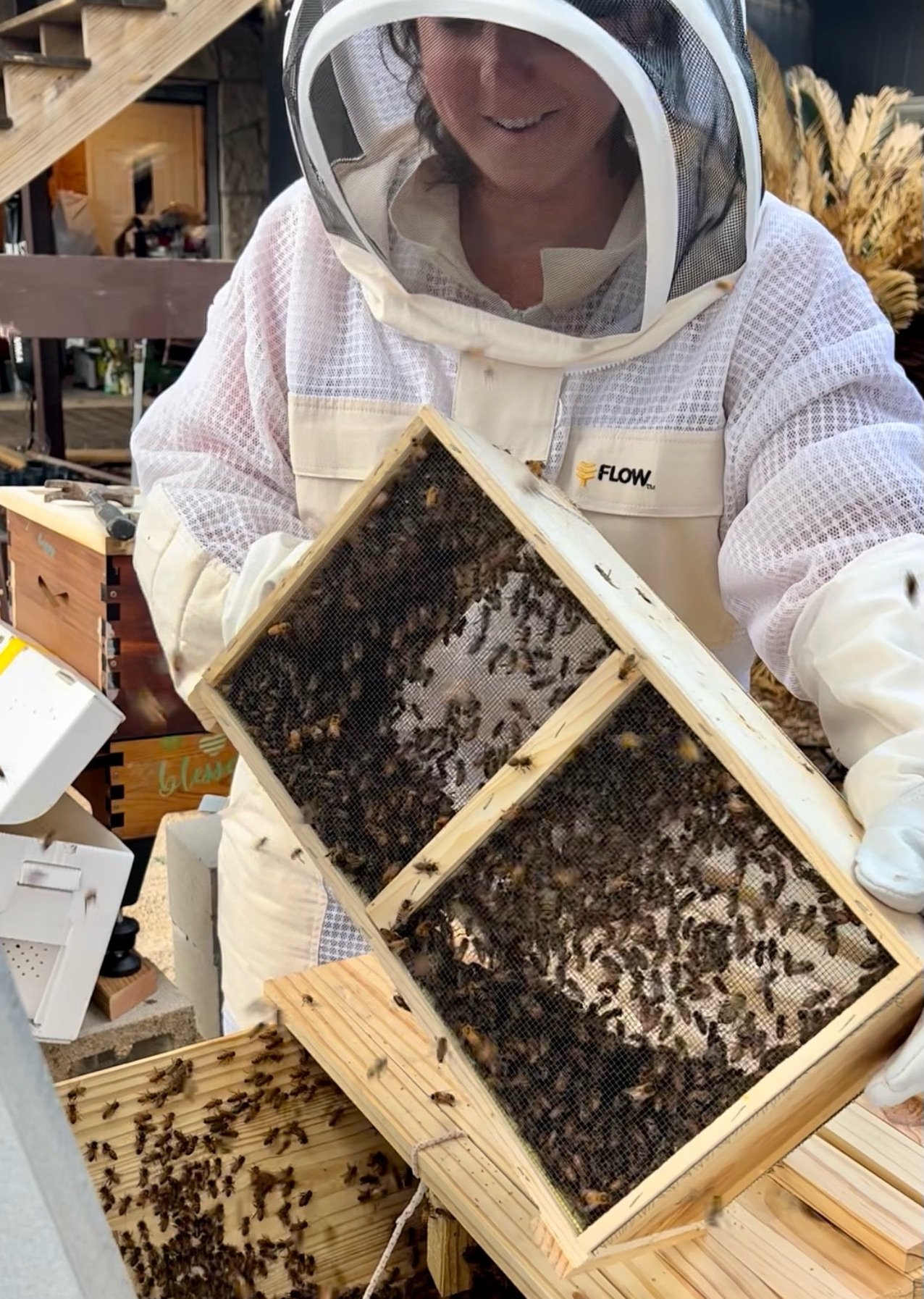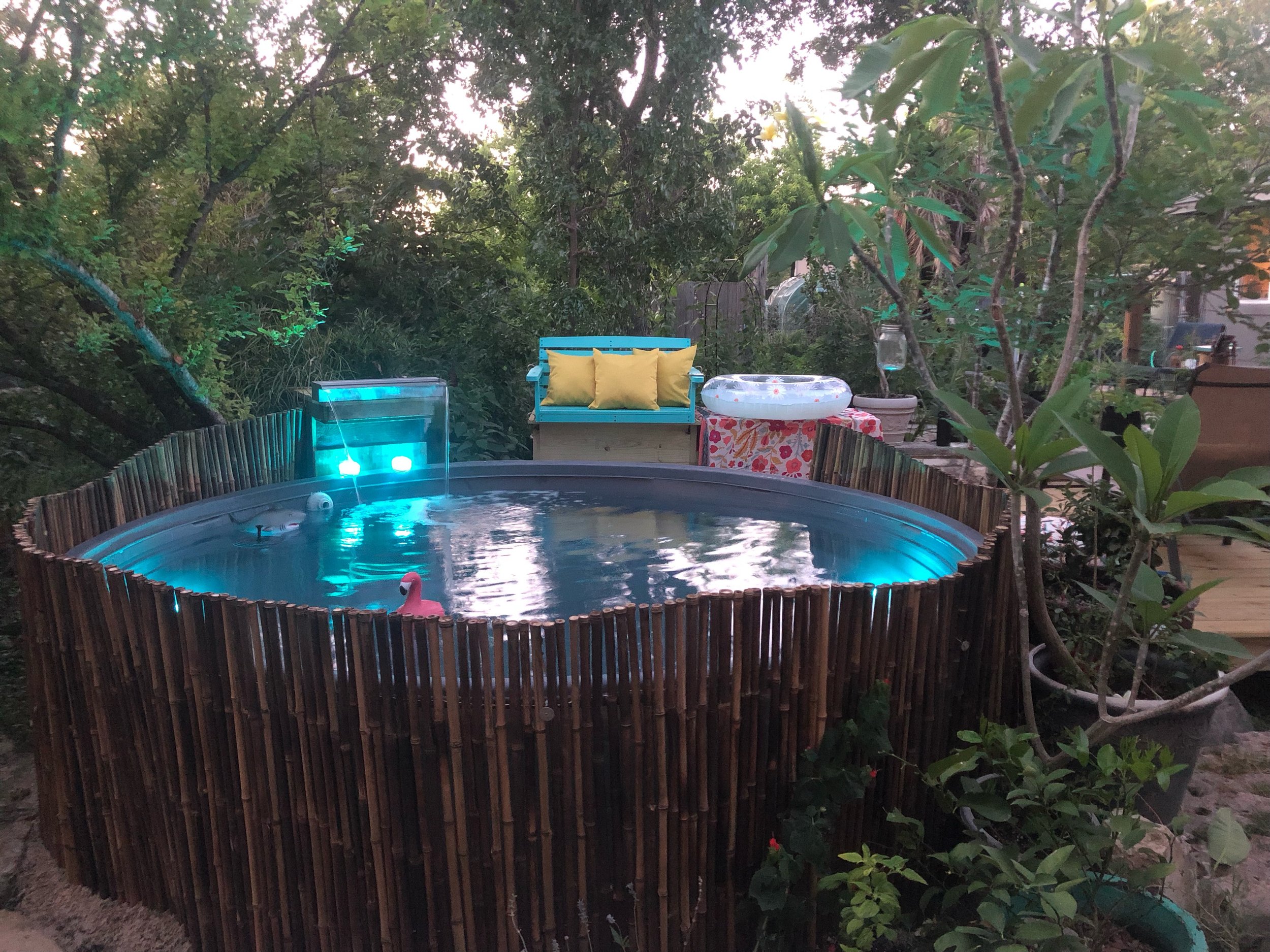Permaculture and Gardening Tenants, Why do YOU garden?
By Brad and Amy Lupton
When we walk out into our gardens, and see all the lush plant life around us, it’s easy to look past the principles in our life that got us there. Many gardeners want a garden, and have many reasons for doing it. Growing your own food is a common reason, and a valid one at that. Having plants to attract birds, insects, butterflies. The beauty of blooming flowers or fresh herbs. Learning these practices and passing on to your children.
Coming from a long line of gardeners in both of our families, and now approaching the 20th year of gardening on our property, many paths have led to why we garden.
Our main homestead (this doesn’t include Liferoot Ranch) is a typical neighborhood lot of around 0.5 acres. In that plot we have over 100 fruit trees, bushes, shrubs and vines, 13 hard wood trees, and 9 vegetable gardens areas and beds. We have two hydroponic beds, and one aquaponic pond.
Overall, this seems like a lot when it is put on paper…but the ecosystem works. Mostly because we have used permaculture principles throughout our gardening. The benefits of permaculture tenants (or practices and principles) can reap benefits for years on your property and your lifestyle.
Definition of permaculture- Permaculture is an approach to land management and philosophy that adopts arrangements observed in flourishing natural ecosystems. The development of these agricultural ecosystems are intended not only to be sustainable and self-sufficient, but to thrive and climax.
Permaculture is not restricted to just your property, it can be applied to life in general, as well as business.
Permaculture principles allow us to create a culture that can endure and thrive for generations to come.
At its heart are three very simple tenets, or ethics:
Care for the planet.
Care for people.
Return of surplus. (Like tithing or sharing excess to help and return to balance.)
These tenant seem simple enough, but they also include 12 sub principles to help explain further the tenants above.
The 12 principles of permaculture are as follows:
1.) Observe and Interact
Stop and be aware of nature around you, otherwise you will waste time and energy. Mainstream mentality is 1 hour to think and 9 hours to work. Permaculture mentality is 9 hours to think and 1 hour to work. We can learn from nature and from other people, observing how others have moved to a greener and more ethical approach, and working with the world around us to succeed in our goals. Rather than work against nature.
Examples - watching your back yard, figuring out where wind and light patterns are and then orienting your garden correctly and putting it in the best place in the back yard.
2.) Catch and Store Energy
Energy is abundant on our planet. Learning how to catch and store that energy – in plants, with renewable energy infrastructure, or in other ways, is key to living a sustainable way of life.
Examples - solar with batteries, water tanks and bodies of water, wind mills, garden produce, money in the bank, gasoline / diesel / propane / methane / alcohol / natural gas, etc.
3.) Obtain a Yield
Taking the three core ethics of permaculture into account, we can work with nature to get all the things we need. Obtaining a yield can be as simple as using organic gardening techniques to provide food for our families – but it can also be about obtaining a non-tangible yield: happiness, health… or mental well-being.
Living a sustainable lifestyle that sticks to permaculture principles can allow us to obtain all sorts of more intangible yields as well as the obvious tangible ones.
Examples - garden produce, make money selling something, muscles from working out, happiness from watching chickens chat
product yield
energy yield
emotional yield
4.) Apply Self-Regulation and Feedback
When we set up a system, we need to stick to the parameters. Then we will be able to accept the feed back our system gives us as a recommendation on how to move forward.
Example - If your plants are drying out between watering, they need water more often and / or they need more biomass integrated into the soil to help with moisture retention. Understanding where we’ve succeeded and where we’ve gone wrong is vitally important to creating real and lasting change. Apply our learned knowledge.
5.) Use and Value Renewables
It’s wonderful and less wasteful to reuse and repurpose things on your property or in your garden.
Examples:
an animal that can pull a cart, eat grass, poop out fertilizer, produces off spring, can be eaten, its skin and organs can be used for clothes and tools
a milk jug can hold milk, be used to catch water under a drip edge, be used as a plant pot. An old gate that is broken, can be reused as a green bean trellis
6.) Produce No Waste
This is next to impossible, but being intentional brings it closer to reality.
Examples:
Composting, mulching, veggie bits and ends can be eaten by composting worms, their waste is perfect plant food; the worms can be harvested for fishing and moved to garden beds to increase aeration
Veggie bits and ends can also be composted, perfect to add directly to garden beds and potted plants
Veggie bits can be fed to hogs and chickens, their manure can be composted and then applied directly to garden beds
7.) Design from Patterns to Details
Whether designing a new vegetable garden, or an entire new sustainable way of life, we have to look at the big picture before we get bogged down in the little things.
Thinking holistically, about all areas of our lives, can help us move forwards in a positive direction.
Examples:
Lets design the property before we design garden it self. Lets design the house before we design the pantry. I (Brad) have found that correctly prioritizing the design steps allows things to fall into place rather than forcing a round peg in a square hole
By designing an entire property first, you know where the utility corridors need to be so that they won’t be cut into or crossed over incorrectly, etc. Think of the old glass jar story: with large marbles, medium marbles, small marbles, sand. As long as priorities are recognized, everything will fall into place.
Map from Sivananda Ashram Yoga Farm
Permaculture Zone Map
Separated into how often you need to visit:
0 - home
1 - gardens, worms, water sources, fuel, small animals, green houses
2 - chickens, larger animals (pigs), bees, perennials, smaller fruit trees, compost bins
3 - larger fruit trees, larger nut / forage trees, pastures for larger animals (cows, bison),
4 - partly manage wild system to benefit what you’re doing on your property; maybe you allow pecans grow but you thin out elms, etc.
5 - completely wild property
8.) Integrate Don’t Segregate
Plants work well in diverse systems – the same is true of people too. Planting polycultures (guilds of plants which work together) is just one example of how this principle works in the real world.
Guild: Group of plants, shrubs, trees that work together beneficially and create a better system than if paired up with other plants
Example Three and Four sisters:
Pole bean - climber, Nitrogen, protein / food
Corn - structure, carbs / food
Squash - spiny ground cover, food
Bee plant - pollinator / attractor, herbs
Flowers and vegetables together
Example: Many hands make light work
9.) Use Small, Slow Solutions
Examples:
The bigger they are the harder they fall; large systems depend on large amounts of work and input, human or animal; smaller systems are more nimble and take less input
Slow and steady wins the race
Start out slow and then pick up momentum as you get better
When we get in over our head we tend to cut small corners,
“If you don’t have time to do it right (correct) now, what makes you think you’ll have time to do it right later?” -quote from Amy’s father
10.) Use and Value Diversity
Ecosystems work best when filled with a greater variety of plants and animals. In your garden, home and your life in general, it’s a good idea to promote and value diversity in all its forms.
Example: Mono culturing vs poly cropping
When certain plant pests hit a mono crop they have little to stop them as they feast
When they hit a poly crop they have to go through plants they wouldn’t eat to get to more palatable plants, this increases their chances of bumping into a predator
11.) Use Edges and Value the Marginal
Where a forest meets a meadow can be thought of as the edge of the meadow and the edge of the forest. This area will have more diversity than either the forest or the meadow. This is what we are looking for, so we need to design our systems with as much edge as possible.
Examples:
What has more edge, a rectangular lake or a lake with fingers and wavy banks?
Therefore we would design a lake or pond with as much edge as we can
The more edge the more ares for plants to grow, more areas for fish nurseries, which simply cascade into a more fruitful body of water
12.) Creatively Use and Respond to Change
How to evolve and acclimate to change in your garden. Keeping a journal, noticing weather patterns. Knowing when to prepare for different seasons and weather patterns













